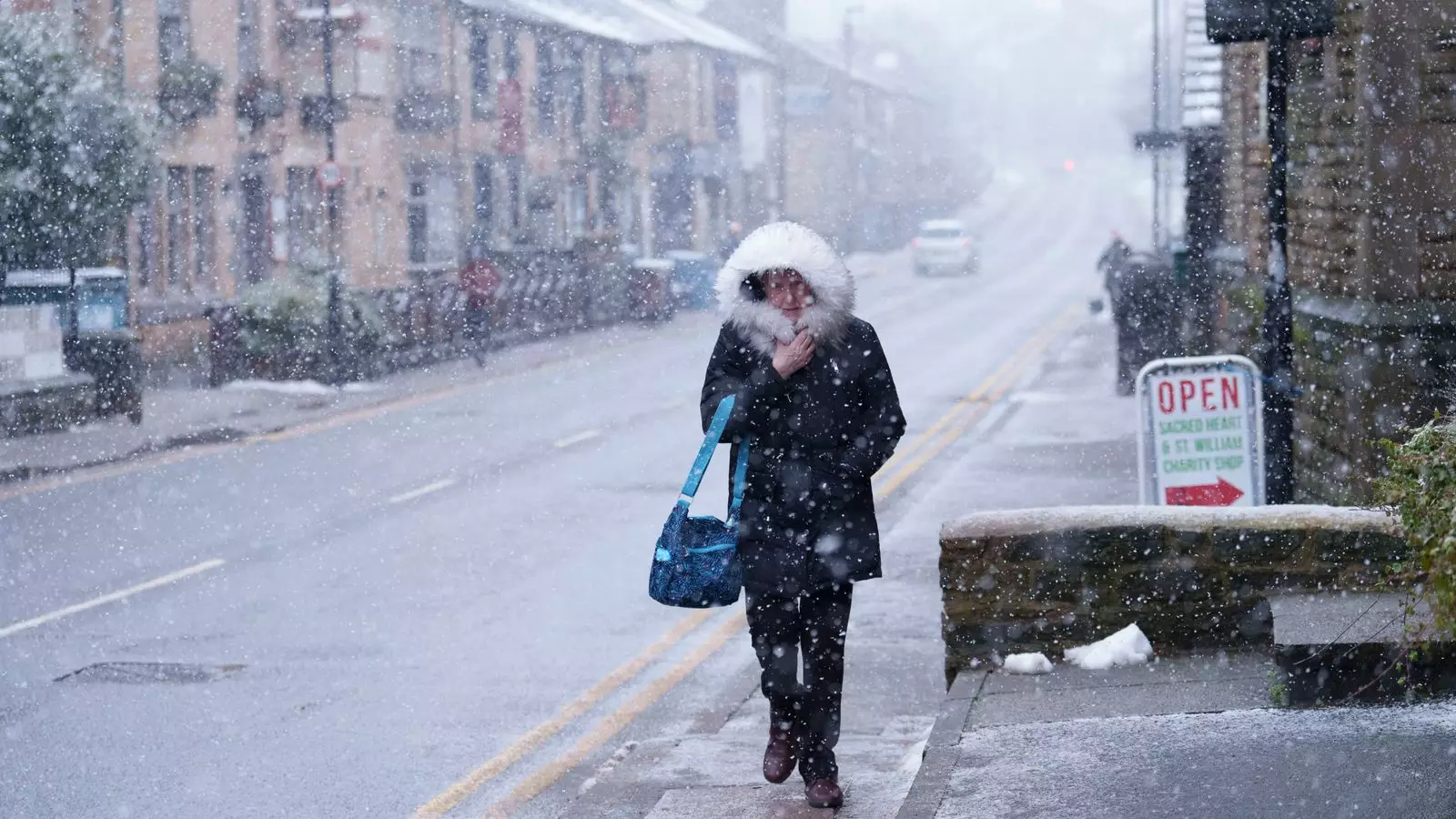As winter intensifies across the United Kingdom, a new weather warning for snow has emerged, particularly affecting southern England. The Met Office has issued a yellow weather warning, highlighting the potential for hazardous conditions due to snow and ice. This warning, effective from 9 AM to midnight on Wednesday, encompasses a vast area, stretching from Kent to Cornwall and up through South London. Authorities estimate that snow accumulation will range from two to five centimeters broadly, with higher altitudes possibly witnessing up to 10 centimeters. This stark forewarning has raised alarm bells not just about snowfall but also the subsequently dangerous icy conditions.
The current week promises to usher in some of the coldest nights of the year, with chilling temperatures plummeting as low as -14°C on Wednesday and dipping to -16°C by Thursday night, particularly in the North East and across Scotland. The combination of low temperatures and snowfall poses significant risks to travel and daily activities, contributing to hazardous road conditions. The Met Office has aptly warned the public about the likelihood of disrupted transport services, urging caution to those navigating untreated roadways.
While the threat of snow looms, the UK is simultaneously grappling with the aftermath of severe flooding incidents that have plagued various regions since New Year’s Eve. The Environment Agency reports that an alarming number of around 300 properties have experienced flooding, despite the protective measures put in place for over 41,000 homes. Heavy rainfalls during the holiday season resulted in considerable river and surface water flooding, particularly in the North West and Yorkshire. With the additional pressure from snowmelt, areas such as the Midlands are facing intensified disruptions that threaten safety and daily life.
In light of these weather challenges, flooding minister Emma Hardy has publicly offered her sympathies to those communities impacted by floods. She recognizes the immense support that the Environment Agency and emergency services have provided during this crisis while urging citizens to heed official guidance and sign up for flood alerts. These safety advisories are crucial, as the situation continues to evolve, requiring ongoing vigilance from individuals living in at-risk areas.
Currently, there are about 100 flood warnings active across England, encouraging residents to remain alert in the face of possible sudden changes in weather and subsequent flooding risks. A particularly concerning situation arose with a warning issued for the River Soar near Barrow upon Soar, which posed an immediate danger to life. While this specific warning has since been lifted, the Environment Agency did emphasize the need for precautionary measures, including evacuations in vulnerable areas like caravan parks, where the situation could escalate rapidly.
The adverse weather conditions have already begun to manifest significant disruptions to normal operations across the UK. Hundreds of schools have closed their doors, and transport links—both road and rail—are impeded. Moreover, major airports including Manchester, Bristol, and Liverpool John Lennon have temporarily suspended flights due to the treacherous weather conditions. Such wide-ranging impacts underscore the severity of the current winter storm and the extent to which it disrupts everyday life.
As southern England braces for the snow and the potential for continued flooding, it is imperative for citizens to stay informed and prepared. Extreme weather conditions demand proactive responses, both personally and collectively, to navigate the challenges that winter brings. Emergency services and government bodies play a crucial role in ensuring public safety, providing vital updates and assistance as the situation develops. By working together and following official advisories, communities can better weather the forthcoming storms and remain safe during these cold months.


Leave a Reply